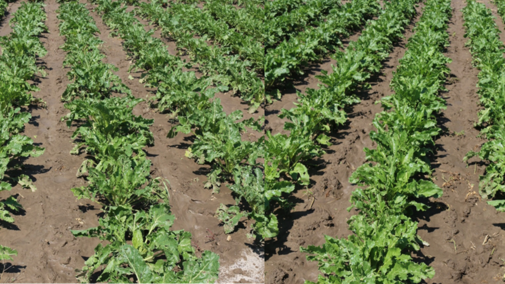Replanting of sugarbeet due to early season frost or wind damage is a common practice in the western Great Plains (Figure 1). Replanting delays the crop several weeks and may result in reduced sugar and root yield. However, just how much stand must be lost before replanting makes sense? To determine the replanting threshold 10 field trials were carried out between 2014 and 2016. These trials also considered the impact of irrigation method, variety, and row spacing effect on replant thresholds.

- Beets were planted at a standard planting date at populations ranging from 12,000 to 56,000 plants per acre.
- A late-planted stand was established a month later at 36,000 plants per acre (Figure 2).
- Statistical modeling was used to estimate at what population level yield would equal the replanted population.
- Replanted beets never yielded better than the standard planting date.
- Replanting was estimated to result in a higher yield if the original stand fell below 5,000 to 12,000 plants per acre. Or, one plant every 24 inches in 22-inch rows and one plant every 18 inches in 30-inch rows.
- Irrigation type and sugarbeet variety had little influence on the replanting threshold.
Treatment and Study Design
- Furrow vs sprinkler irrigation
- 22-inch vs 30-inch row spacing
- Two sugarbeet varieties
- Seven populations planted on May 1
- One population planted on June 1
- Sixty-four treatments

Summary
The study design only evaluated agronomic yield, which did not consider the economic costs of replanting. Additionally, all populations were uniform. In a real-world stand loss situation, stand loss would be irregular, making these results harder to implement. While it is difficult to replicate real-world stand loss in research plots, these results indicate sugarbeets are more resilient to stand loss than earlier research indicated. The difference between this study and earlier research is likely explained by better weed control and improved sugarbeet agronomics. Specifically, glyphosate-tolerant sugarbeet varieties allow control of weeds that normally would flourish in a stand loss situation, and modern varieties grow quicker and are better able to compensate for stand loss.

